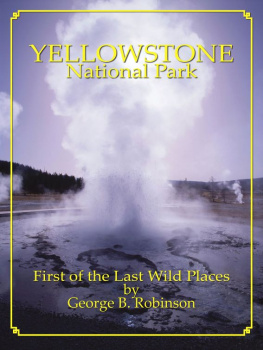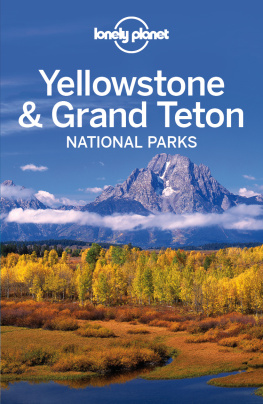YELLOWSTONE
First of the Last Wild Places
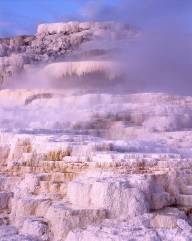
by
George B. Robinson
*****
SIERRA PRESS
Smashwords Edition
Copyright 2010 Sierra Press
*****
Smashwords Edition License Notes
This ebook is licensed for your personalenjoyment only. This ebook may not be re-sold or given away toother people. If you would like to share this book with anotherperson, please purchase an additional copy for each person. Ifyoure reading this book and did not purchase it, or it was notpurchased for your use only, then please return to Smashwords.comand purchase your own copy. Thank you for respecting the hard workof this author.
*****
ACKNOWLEDGMENTS
My enduring thanks to my father whointroduced me to the National Parks when I was two years old. Hestarted me on a long journey to Yellowstone. I am also grateful tomy former colleagues at Yellowstone for sharing with me theirknowledge of "Wonderland." They know who they are. finally, I willalways think of Jeff Nicholas at Sierra Press, and my editor NickyLeach as more than publishing professionals, they are good friends,who share my passion for words and writing.
G.B.R.
*****
CONTENTS
*****
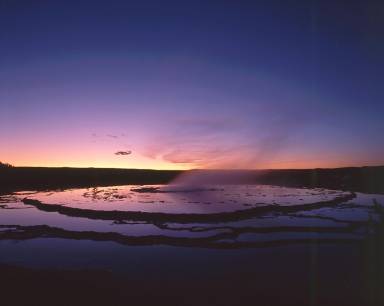
Great Fountain Geyser atsunset
Places circle in my mind like giftingbirds
Small, quick perceptions the gifting birdsleave me
Some I can put together, not as a story ortheory, but a sense of life, of place
Random perceptions become groups ofexperiences, pieces tumbling in
Puzzle pieces without jigsaw cuts to definethem.
Charles Jones, The Gifting Birds
Yellowstone is both a real place, and astate-of-mind. It is a powerful elixir for methe kind of placewhere author Barry Lopez has suggested that I can renegotiate mycontracts with nature. Because I have worked in national parks myentire life, I feel a special kinship with Yellowstone, and I amgrateful for its gifts to me.
In a way, Yellowstone is the beginning andend of a long personal odysseythe culmination of a tradition. Myjourney to Yellowstone began 60 years ago when my father accepted ajob in Lassen Volcanic National Park in northern California. Itforetold a time when I too would work in a geologicalwonderland.
As a child, I had heard about Yellowstone. Iwas enchanted by the idea of its wonders. I had seen photographs ofOld Faithful, Yellowstone Falls, and grizzly bears in books andmagazines, and my teacher had talked about it in school. I formed amental picture of what it must be like. In Lassen, I had seenfumaroles and hot springs. I had watched steam venting from thecool summit of Lassen Peak. My father had told me how ancient MountTehama had collapsed inward to form a huge crater called a caldera.Often, I had seen bears and other large animals. Surely, I thought,Yellowstone must be like these things.
I had gone to Yellowstone with my fatherwhen I was a youngster, but I only remembered seeing some of itspopular iconsOld Faithful, Yellowstone Lake, Mammoth Hot Springs,some bears. Like many folks, my visit was cursory and superficial.I did not return to Yellowstone until the last few years of mycareer, and it was only then that I began to see that there wasmuch more to this wonderland than the things that I had dreamedabout and seen in my youth. Of course, there were hundreds of factsand figures to learnmany of which I soon forgotbut each day inYellowstone, gifting birds brought new and precious fragments ofthought and feeling that began to merge into a deeper understandingof meaning and place.
I am not a photographer, yet everywhere inYellowstone my eyes take hundreds of pictures, all perfectlyfocused, composed, and exposed. I keep those images in my mindsalbum where I can recall them whenever I long to return toYellowstone. Opening the album I find a hillside carpeted withspring wildflowers exploding with colors like a van Gogh painting.On another page I see an infant stream rising in an alpine meadowover two miles above the sea that will inevitably claim it. As thepages turn, other images unfold. I see fluted colonnades of ancientvolcanic rock, a trout struggling upstream to spawn, a marmotsunning itself on a talus slope. On still another page I see aniridescent dragonfly wing, a fawn standing for the first time onwobbly legs, a waterfall concealed by a winter shroud of ice.Thumbing through my mental images I can watch Old Faithful eruptagain, recall the spectacle of the great fires of 1988, and see adipper walk under water in search of food.
Each time I open the album I am enchantedonce more by Yellowstone, but I am reminded too that only as amanifestation of an idea, a dream realized, have people shaped thisplace. No human thought or actions have sculpted its features, orfilled its ecological niches with abundant and diverse life forms.Again I sense that there is a rhythm to naturea subtle flow ofenergy that Eastern philosophers call chithat links allthings. In Yellowstone, wild things move to a different cadencethan we do. It is slow, measured, and harmonious.
Practitioners of the ancient Chinese art offeng shui believe that the spirit or atmosphere of a placeinfluences the physical and emotional well being of people. Theyare sensitive to the essence of things, and they manipulate,combine, and blend the parts of living and working spaces toenhance their influence on people. Here, natural process is like afeng shui master, arranging all of the elements in the houseof nature in the most harmonious way. In these mountains, naturehas woven a complex fabric of shapes, hard and soft, large andsmall; a network of lines crossing lines; angles folded uponangles; circles within circles; a full spectrum of colors; thebasic pattern of natural order that Zen philosophers refer to asli.
I have a covenant with Yellowstone. To fullyexperience it, I must come to understand and appreciate it, to seethe pattern, to apprehend the meaning of its li. When Iallow the place to envelop me, I can feel its rhythm, the flow ofits chi. I can see the beautiful complexity of its lirevealed. I can sense its palpable wild spirit. I can listen to itscountless stories told in opposites of light and shadow, birth anddeath, winter and summer. I can have a perfect moment in a perfectplace.
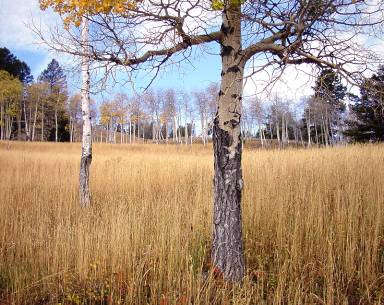
Aspens in lateAutumn
An intricateweb of interaction connects all life into one vast,self-maintaining system.
Each part is related to every other part andwe are all part of the whole
Lyall Watson, Supernature
Animals, plants, and the ecologicalprocesses that bind them together neither see, nor respect, theboundaries that people have drawn. Acknowledging these ecologicaltruths, scientists and resource managers have increasingly lookedbeyond the parks legal boundaries for relationships andconnections. With the park as a central element, they have defineda Greater Yellowstone Ecosystema description that aptly conveys asense of both the remarkable size and the great significance of thearea. Unfortunately large ecosystems can become disarticulatedpatchworks of differing uses under federal, state, city, andprivate jurisdiction.
The Greater Yellowstone Ecosystem is anaggregation of countless smaller systems. Each is discrete andessentially self-sustaining, yet all are connected through theintricate and precisely ordered mechanisms of ecological process.The greater ecosystem represents the whole organism, not just oneof its organs. It is an affirmation that ecologically the whole isgreater than the sum of its parts. It is the larger context of lifeand environment in which each smaller system operates, and uponwhich they rely for their health and vitality.
Next page
